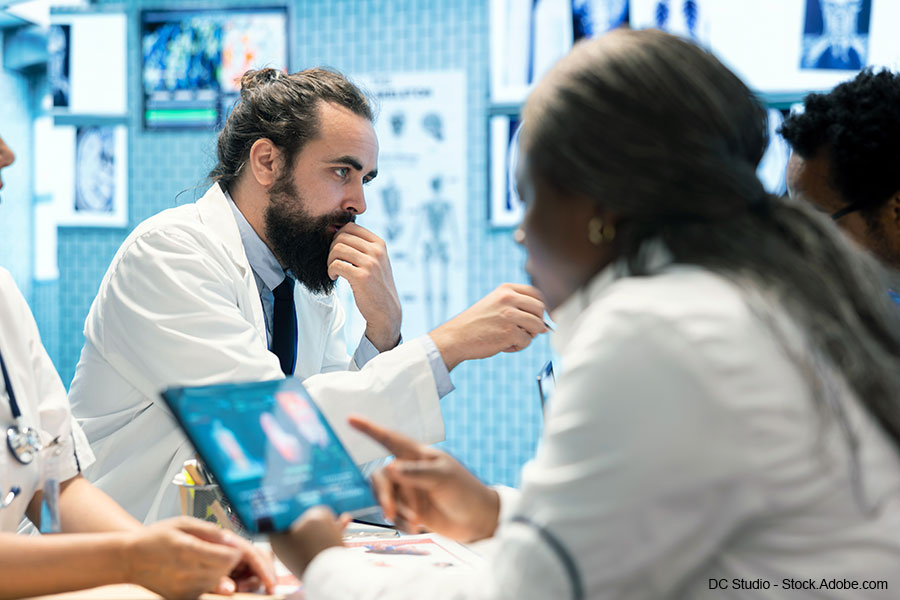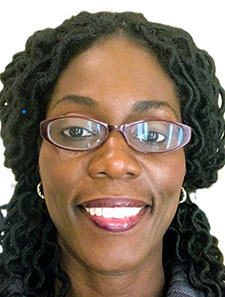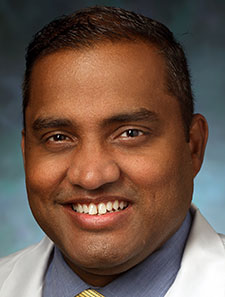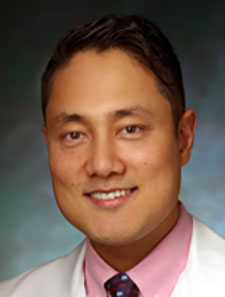 Hospitalists are at the forefront of inpatient care and are well-positioned to reduce diagnostic errors while promoting diagnostic excellence.
Hospitalists are at the forefront of inpatient care and are well-positioned to reduce diagnostic errors while promoting diagnostic excellence.
Diagnostic errors, defined as “the failure to (a) establish an accurate and timely explanation of the patient’s health problem(s) or (b) communicate that explanation to the patient,” result from failures in meeting standards of excellence.1-3 Approximately 250,000 diagnostic errors occur in hospitals across the U.S. each year.4
Diagnostic excellence lies at the opposite end of the diagnostic error spectrum. It’s the process of accurately and precisely explaining a patient’s health problems and concerns.2 To achieve diagnostic excellence, it’s crucial to learn from both errors and successes in patient care; this includes learning from experts and colleagues, seeing numerous disease presentations, and gaining valuable clinical experience.1,5
Over time, clinicians accumulate useful insights from both diagnostic errors and diagnostic successes. These clinical insights or lessons are valuable for healthcare practitioners striving for diagnostic excellence. In a qualitative study published in the Journal of General Internal Medicine, hospitalists at five independently administered hospitals in the Mid-Atlantic region of the U.S. from February to June 2022 were interviewed to identify and characterize the clinical lessons they learned from diagnostic errors and successes in patient care.6
In this article, we elaborate on these lessons, provide narrative quotes from the study, and describe challenges encountered by hospitalists for the broader hospital medicine community to reflect upon.
Lesson #1: Develop excellence in clinical reasoning skills
Clinical reasoning includes the ability of the clinician to gather and synthesize information and generate hypotheses to make a diagnosis and management plan for the patient.7 Hospitalists described lessons learned from all aspects of the clinical reasoning process. Some lessons related to the clinical reasoning process are further elaborated below.
The importance of basic bedside skills: “A patient had been referred with fever, unexplained cranial nerve deficits, and altered mental status. We had to figure out what was going on and on the physical exam, there was black eschar in the nose. In a sort of eureka moment, I knew exactly what the patient had—rhinocerebral mucormycosis. It was not a good outcome, but I was able to provide closure to the family.”
The inability to use tests appropriately led to an error: “We had a patient on our service being followed with serial X-rays for non-specific ileus. The patient didn’t really look ill, and it wasn’t until later in the patient’s course that a [CT] scan showed a perforation and the patient ended up dying. As hospitalists, we have cut down on unnecessary tests but knowing when it’s appropriate to get more tests rather than watchfully waiting is also critically important.”
The value of humility is learned through experience: “You have to be humble enough to know that you will make errors in diagnosis and management. Sometimes it’s because you don’t know and other times it’s because you become complacent and you’re not thinking about those things. But over time, you have to learn from those mistakes.”
Lesson #2: Connect with patients, families, and colleagues to tap into their insights
Insights from patients, family members, and other care team members help us consider and arrive at diagnoses that otherwise would not be thought of.
A hospitalist described how listening to a colleague was advantageous in getting to the correct diagnosis: “It’s not only important to listen to patients but also what other members on the team are telling. No one had been able to figure out the diagnosis for a patient as her complaints were vague. The physical therapist who saw her mentioned she complained of her legs being heavy, which made me think of weakness. I sent her for an imaging of her head which revealed a gigantic meningioma.”
Another hospitalist highlighted the value of assessing family members’ viewpoints: “It’s important to hear the patient’s story from multiple perspectives. I picked up a patient with E. coli bacteremia with no source. He was seen by infectious disease and the plan was to stop IV antibiotics after a week. However, his wife told me he was having a lot of neck pain. She further raised concerns that he had been able to walk prior to coming to the hospital but now was becoming increasingly bedbound. We hadn’t considered his wife’s concerns. An MRI showed an epidural abscess.”
Lesson #3: Use reflection to continuously learn and challenge diagnoses
Self-reflection on the diagnostic process often helped hospitalists improve their diagnostic skills.
A specific example was shared by a hospitalist: “I think self-reflection is very important; should I be open to other diagnostic possibilities? This takes time to build. I was caring for a patient who had been seen by ophthalmology for a lesion in his retina that was thought to be due to cancer. Things got worse quickly, and it wasn’t making sense anymore that it was a met. It ended up being Nocardia. I think it’s important to not just trust the sub-specialist but be able to collaborate if something is making you uneasy, to not anchor on the diagnosis, and to reflect on new information.”
The value of slowing down to reflect is highlighted by this comment: “We had a child with trisomy 21 who had surgery for annular pancreas but wasn’t tolerating feeds. X-ray showed air through most of her intestine except for her rectum. She ended up having Hirschsprung’s in addition to the annular pancreas. Some hosts can have multiple things and challenging yourself to slow down to run through the differential is a good way to remind yourself of the possibilities.”
Lesson #4: Commit to a growth mindset and actively seek feedback
Actively seeking feedback and committing to a growth mindset were frequently used by hospitalists to improve their diagnostic skills.
A hospitalist commented on specifically getting feedback from patients: “It’s important to reach out to patients after they go home. I call them to check how they are doing because in hospital medicine we don’t get feedback. Just because we never hear from patients doesn’t mean that we were correct in our diagnosis/management. It may be that they are still not feeling well or could have gone to another hospital. I think this is relatively easy to do and provides us with a wealth of information.”
The importance of having a coach is elaborated: “We all have blind spots in our practice. The only way for us to be made aware of them would be through feedback. Having a coach who looks at our work and gives us feedback is tremendously important to help us improve.”
Another hospitalist remarked on consistently growing as a clinician: “Your education never stops as a clinician. It’s that growth mindset. When somebody is giving you feedback, if you get angry and defensive, you’re never going to learn. Being open to feedback is very important.”
Lesson #5: Prioritize wellness
Personal wellness was deemed an important component to improve the diagnostic process. Gaining inspiration from outside of medicine and learning to cope with stress aided hospitalists in being better diagnosticians.
Several described lessons learned from outside medicine, such as through reading and practicing mindfulness: “I read a lot of things beyond medicine to understand myself as a leader and to better work with others. I think having a broad interest and being fairly well-read allows us to be better conversationalists. And being a better communicator allows us to get meaningful information from the history to help with the diagnosis.”
“When things are very chaotic, being able to center oneself and be present in the moment is really helpful. We get multiple messages, and it is easy to get overwhelmed and make errors. Before I go to see a patient, I will take five seconds to take a few deep breaths and tell myself I will concentrate on this patient and the family, and really listen to what they are telling me. This will put me in a better state to make a correct diagnosis.”
Challenges hospitalists encounter
Several hospitalists also shared experiences about challenges faced in patient care.
These challenges were described in various forms such as bias contributing to a delayed diagnosis: “A middle-aged woman presented to the emergency department for the fourth time with significant pain in her arm. It wasn’t being addressed. Finally, an MRI showed cancer. There was a tendency to dismiss her complaint. You do an X-ray there’s no fracture, so that must be a woman’s nerves.”
Another hospitalist reported a culture of “not wanting to admit errors,” and a culture that promoted perfection without acknowledging mistakes: “I think the expectation is to be perfect and anything less is not okay. Any kind of deficiency is very difficult for people to discuss and acknowledge. I think it’d be good to start with the idea that nobody’s perfect. We all make mistakes.”
The hospital is always busy, and clinicians explained that covering many patients interferes with their ability to thoughtfully consider all diagnostic possibilities: “We all preach at the altar of clinical care, but we also know how hectic it can be and how unpredictable it can be. That’s because it’s challenging. It is unfathomable how a physician can admit 10 new patients in a 12-hour shift and do that safely and effectively. It’s dangerous, so to minimize diagnostic errors the answer is to try to control the patient care volumes so that they’re not excessive.”
Additionally, burnout was described by participants as a burden that represents a major barrier to improving as a clinician: “If you’re burnt out, you don’t enjoy your work, you can’t think straight, you’re stressed out at work. Even a very good hospitalist who would not normally make an error could make serious errors if they’re burnt out.”
Conclusion
The path to achieving diagnostic excellence is paved by the lessons we learn from both our diagnostic errors and diagnostic successes. In this educational piece, we have further delved into the key lessons learned and challenges encountered while dealing with errors and successes in patient care by hospitalists who were interviewed as part of a qualitative research study.6 These findings may be useful as a blueprint for hospitalists and organizations striving to achieve excellence in patient care.

Dr. Olayinka

Dr. Gundareddy

Dr. Kotwal
Dr. Olayinka is a hospitalist and assistant professor at the Johns Hopkins University School of Medicine, and the chairperson for the Women in Medicine Committee at the departmental level at Johns Hopkins Bayview Medical Center in Baltimore. Dr. Gundareddy is a hospitalist and assistant professor at the Johns Hopkins University School of Medicine, and the physician advisor and associate director for the division of hospital medicine at Johns Hopkins Bayview Medical Center in Baltimore. Dr. Kotwal is a hospitalist and assistant professor at the Johns Hopkins University School of Medicine, and the co-lead for the education team at the Armstrong Institute for Patient Safety and Quality’s Center for Diagnostic Excellence at Johns Hopkins in Baltimore.
Key Points
- The pursuit of diagnostic excellence requires learning from both errors and successes in patient care.
- Key lessons learned and challenges encountered by experienced hospitalists are described in their stories.
- Consider discussing these lessons and challenges among hospitalists’ groups to reflect upon and grow as we all strive for diagnostic excellence in our patient care.
References
- Balogh EP, et al. The National Academies of Sciences, Engineering, and Medicine. Improving Diagnosis in Health Care. Washington (DC): National Academies Press (US); 2015. PMID: 26803862.
- Yang D, et al. Diagnostic excellence. JAMA. 2021;326(19):1905-6.
- Singh H, et al. developing health care organizations that pursue learning and exploration of diagnostic excellence: an action plan. Acad Med. 2020;95(8):1172-8.
- Gunderson CG, et al. Prevalence of harmful diagnostic errors in hospitalised adults: a systematic review and meta-analysis. BMJ Qual Saf. 2020;29(12):1008-18.
- Chen JH, et al. Decoding artificial intelligence to achieve diagnostic excellence: learning from experts, examples, and experience. JAMA. 2022;328(8):709-710.
- Kotwal S, et al. Exploring clinical lessons learned by experienced hospitalists from diagnostic errors and successes. J Gen Intern Med. 2024;39(8):1386-92.
- Young M, et al. Drawing boundaries: the difficulty in defining clinical reasoning. Acad Med. 2018;93(7):990-5.